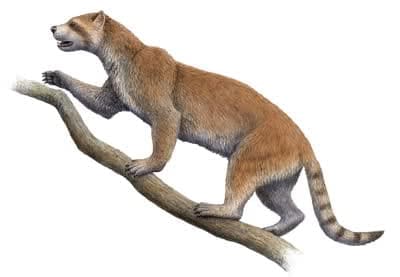
It´s assumed that during the Miocene period (between 28 to 12 million years back), the evolution of the Hemicyon, an intermediary between the Cynoelesmus , “father” of all the canine ones, and the Daphoneus – from which the bears descend as we know them today, – originated the Simocyon, an animal that varied between a fox and a small bear that inhabited in the sub-Arctic regions Siberia and the Northwest of Mongolia and of which it is known had 44 teeth.
In comparison to the bear, the Chow Chow shares the characteristic blue tongue with the small bears of Tibet and Manchuria, the ample skull, the short snout and the square body, in addition, while most other canines have 42 teeth, the Chow Chow has 44 teeth like the bear, although usually lose their extra pair of teeth when they become adults. The Chow Chow, or a very similar predecessor, established in Mongolia and central China many years before the appearance of the Homo Sapiens.
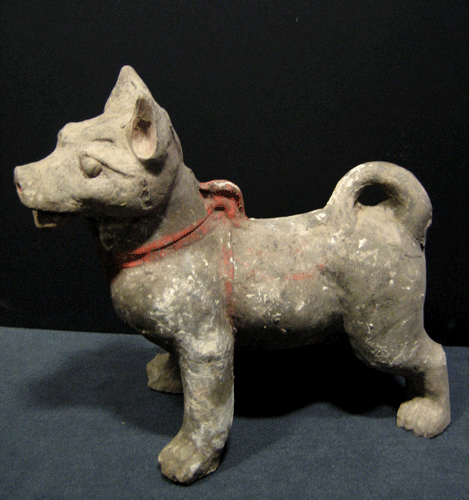
The Chow Chow as it is known today, is represented in the pottery and sculptures of the Han Chinese Dynasty (206 AC to 22 AC); other sources indicate that it was still a much more old race and can have come originally from the Arctic Circle, then migrated into Mongolia, Siberia, and China.
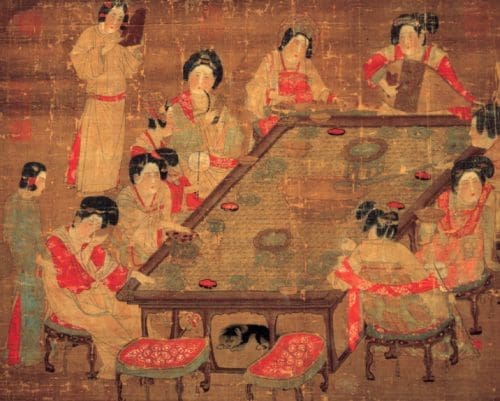
Note chow under table
Some scholars affirm that the Chow Chow is original ancestor of the Samoyed, Norwegian Elkhound, Pomeranian, and Keeshond. In more recent times, that is to say, in the T’ang Dynasty, The Emperor Ling bred chows. As members of the Imperial Household, they were fed on the best rice and meat by an army of servants, had a military escort, slept on rich carpets and were awarded high courtly titles and decorations such as the Order of Kai Fu (Viceroy). These Chows had the double purpose of guarding the Palace and looking handsome and dignified.
Emperors of the Tang dynasty had hunting kennels of 25,000 couples of ‘hounds’ of true Chow type. In the Book of Rites (7th century EC) the ‘foreign chow’ was classified as a hunting dog used to attack wolves and leopards
In the monasteries of Tibet they specialized in the raising of blue coated chows, which took several generations and much dedication, since they managed to perfect a pale blue color. The Chow Chow blue was and continues being used in the monasteries for the protection, as well as hunting and herding

With the ending of the Tang dynasty came an increasing national poverty and, except within the monasteries, selective breeding ceased. The original pure Chow breed only stayed in the houses of the richest merchants, some noble, and in the monasteries.
In those days people used the Chow for hunting, herding, the pulling of sleighs, guarding, and some articles of clothing were made from their coats, as well as consuming its meat.
Great farms of dogs were generated in the districts of the North of China in where the Chow Chow was strangled around the 10 to 12 months of age to avoid damaging the skin. In Manchuria, when a girl farmer married, she received a dowry of Chow-Chow to start a farm. The tongue of the Chow Chow was considered to have curative properties.
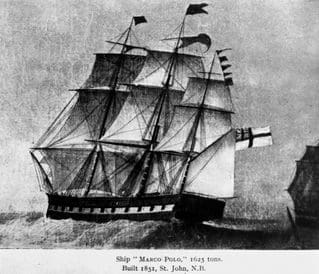 The Chow Chow came to America via England of where it had been engaged in of China at the end of 1700’s. The sailors who returned from the East brought them in the compartments of the merchant boats. The Chow Chow was a term of jargon applied to the great variety of articles taken by these boats. Like a nickname, the term surrounded these dogs.
The Chow Chow came to America via England of where it had been engaged in of China at the end of 1700’s. The sailors who returned from the East brought them in the compartments of the merchant boats. The Chow Chow was a term of jargon applied to the great variety of articles taken by these boats. Like a nickname, the term surrounded these dogs.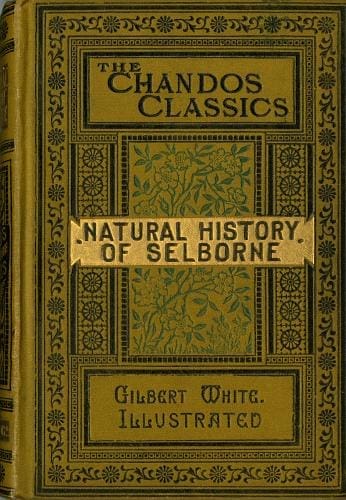
The first European person to mention and describe the Chow was Marco Polo, who visited China as a guest of the Great Mogul in the 13th century and who wrote about them in his account of his travels. But the Chow was unknown in the Western world until the late 15th century when it was brought back as a curiosity by sailors and merchants in the Clipper ships of the East India Company.Writing in his book The Natural History and Antiquities of Seaborne, the Rev Gilbert White describes in accurate detail the import of a pair of puppies from Canton by a young gentleman of the East India Company. These were ‘of the Chinese breed of Canton such as are fattened in this country to be eaten’ He goes on to say the hind legs are usually straight without any bend at the hock. The eyes are jet black. small and piercing, the inside of the lip and mouths the same colour and the tongues blue.

Several Chows were housed in the London Zoo in the Wild Dog area and in 1865 Queen Victoria was presented with some Chows which were kept in cages at Windsor.

But an interest in Chows for breeding and exhibition must have begun in 1879 when a black Chow bitch named CHINESE PUZZLE came to England . The following year she was exhibited at the Crystal Palace dog show by her owner Mr W K Taunton.
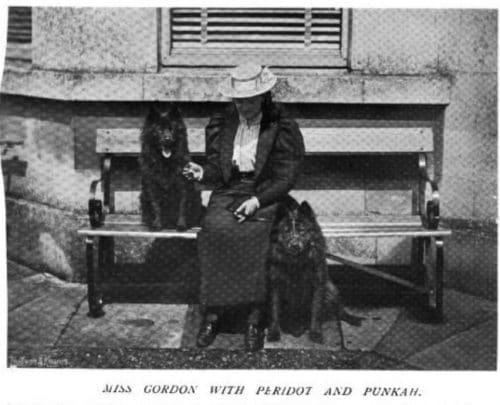 In 1884 the Earl of Lonsdale imported a Chow and three years later he gave the Marchioness of Huntley a dog named Peridot She then bred a Chow named Peridot II which was the foundation for Lady Granville Gordon’s kennel. LadY Granville Gordon was instrumental in getting the Kennel Club to recognize the breed as a Chow Chow rather than as a ‘Foreign Dog’ She also owned the first blue Chows in England .
In 1884 the Earl of Lonsdale imported a Chow and three years later he gave the Marchioness of Huntley a dog named Peridot She then bred a Chow named Peridot II which was the foundation for Lady Granville Gordon’s kennel. LadY Granville Gordon was instrumental in getting the Kennel Club to recognize the breed as a Chow Chow rather than as a ‘Foreign Dog’ She also owned the first blue Chows in England .
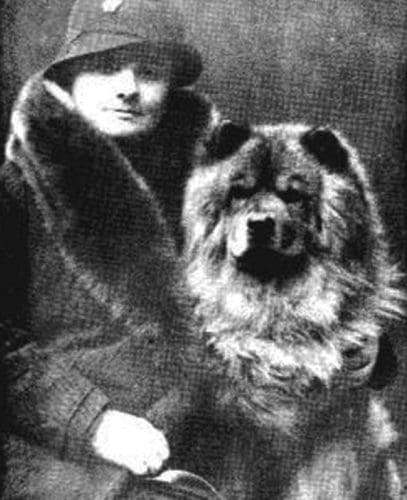
Lady Gordon’s daughter, Lady Faudel-Phillips, later founded the famous Amwell kennels and became the leading breeder and exhibitor until about 1898.Takya was the first Chow Chow exhibited in America, by a Miss A. C. Derby in 1890. Takya took third place at the Westminster Kennel Club show that year
One of the most important years in the history of the Chow must surely be 1895. Four important events occurred. Champion Chow VIII became the first ever Chow Champion, Peridot II was awarded Best in Show at the LKA Championship show, and the Chow Chow Club was formed.
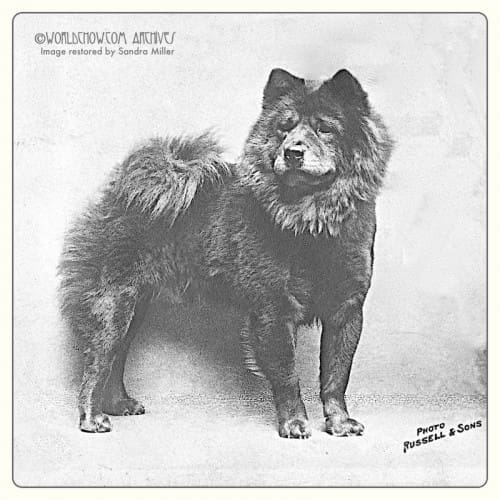
Chows became fashionable in the U.S. roughly around the same time that they were gaining respect in England. “Chinese Chum” was exported to America by Mrs Proctor where he was was the winner of the first U.S. Chow Chow competition in 1905, and sire of many champions himself, including Am Ch Black Cloud and Am Ch Night of Asia , which were the foundation for her ‘Blue Dragon’kennels.Chinese Chum also won Best of Breed at the Westminster Dog Show in 1906.
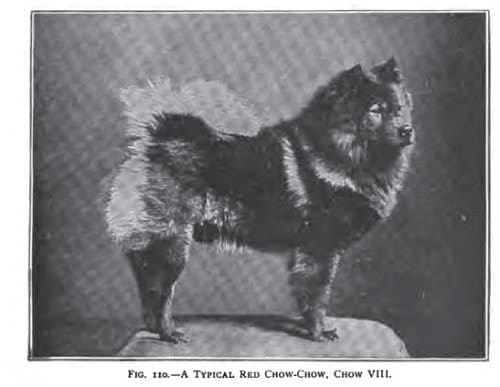
Since then the breeding and exhibition of Chows has gone on apace. Mrs. Jarrett of Philadelphia founded the first American Chow kennel and got recognition for the breed from the American Kennel Club.NOTE THE DOG TO THE RIGHT, CHOW VIII
THE FIRST CHOW STANDARD was based on this dog
In 1906 the American Chow Club was founded. This was followed in 1924 by the foundation of the French Chow Chow Club by Mme Mareschal, revived after the last war by Mme Yvonne Diot. Also in 1974, we have the first entry of a Chow in the German Stud Book.

Gradually the Chow’s lovable character became more widely known and from the 1920’s the popularity of the breed steadily increased and is still increasing to this day. Quite a number of well known, not to say famous, people have owned Chows. In the Royal Family, others, as well as Queen Victoria, have had Chows as pets. Click on the link below which will take you to the Celebrity Chow photographs in the archive


Recent Comments